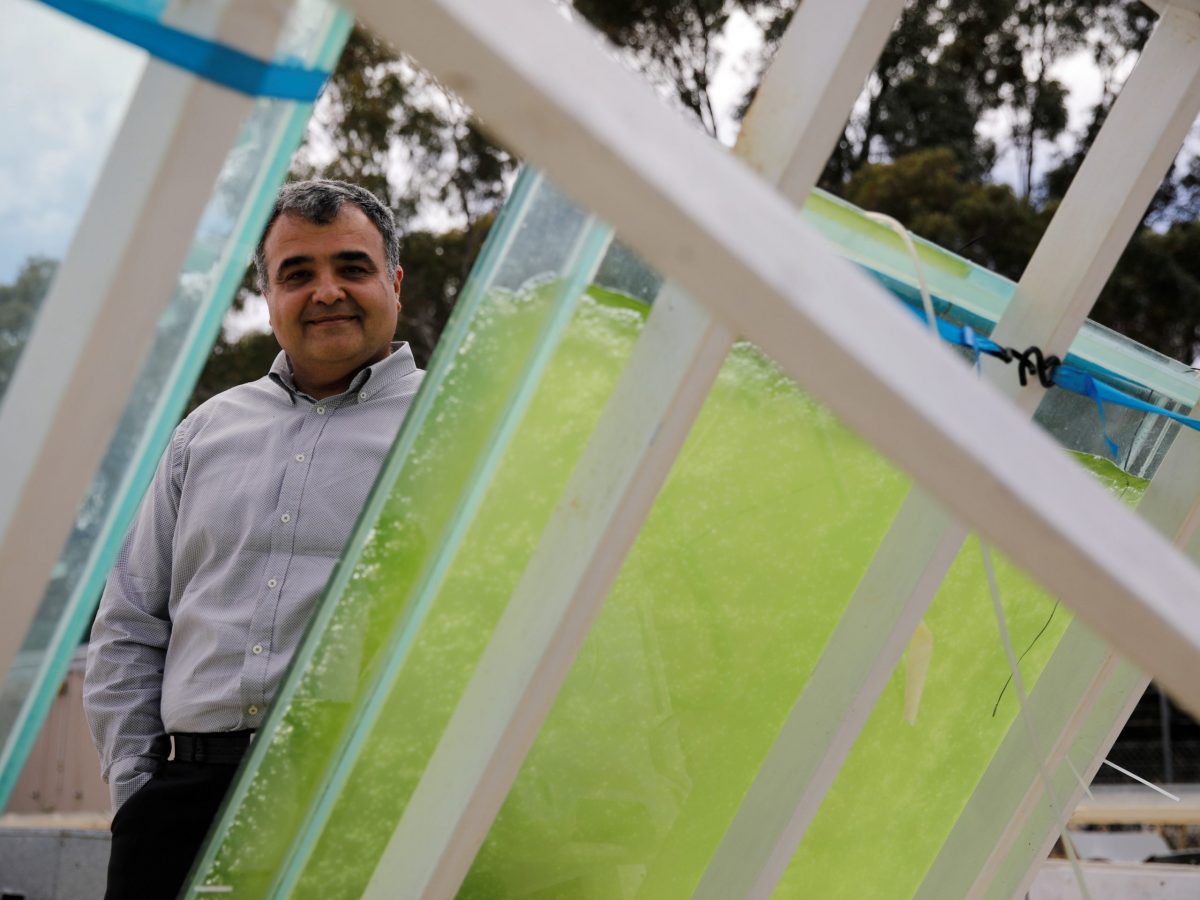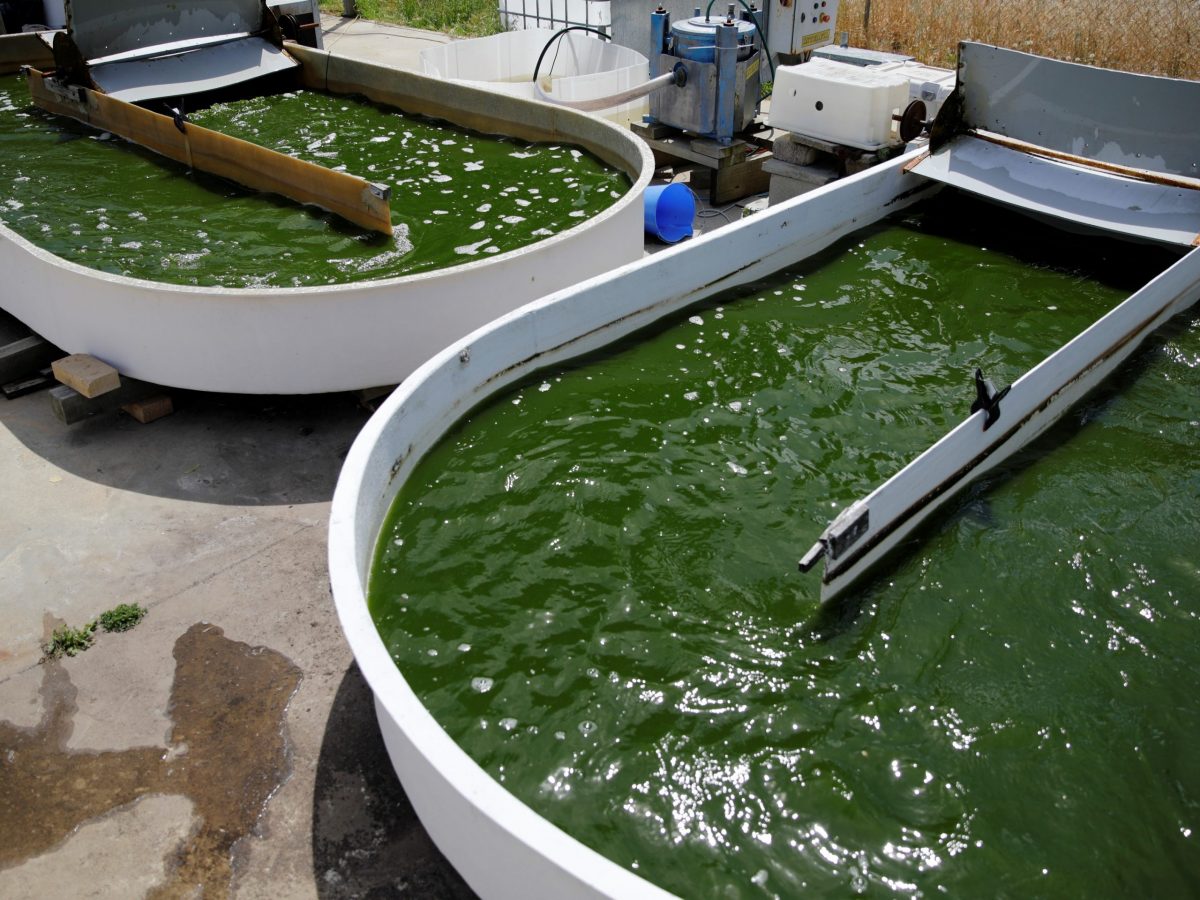Professor Moheimani has led the Murdoch University algal team since 2012. He is an expert on algal biotechnology and has over 20 years as an applied phycologist, working on wastewater treatment and biomass production.
In this edited conversation with Peter Green, Professor Moheimani spoke about his journey into algal research, considerations when sequestering CO2 using algae, and gave some book recommendations to help others learn about the history of algal production.

What initially got you interested in microalgae and what have been some major challenges working in this area of research?
My main interest in algae was carbon sequestration. So that was the driving force behind my PhD in 2000 and the science behind this certainly works. You can sequester carbon using algae and plants, but whether we can use it at the scale people are proposing is another question. It's a fantastic idea in general. Every molecule that we produce through algal processes would help us to reduce our dependence on other, less sustainable sources.
However, people need to be very careful when they're counting carbon. In my research I quickly discovered that the economics behind sequestering carbon dioxide with algae is a major limitation. That's because carbon sequestration currently costs around $20 a tonne. In the case of microalgae, 50% of the biomass is carbon and, at the very cheapest, it costs us $3 to $5 a kilogramme to produce this algal biomass. So, that carbon costs us $10 per kilogramme which is way off when it comes to economics.
A lot of the marketing in algal carbon sequestration is incorrect because people are recycling carbon more than sequestering it. The only true carbon sequestration involves holding the carbon and locking it somewhere, like in other products.

You've been involved in different applications of microalgae, but is there one area in particular where you've seen a lot of developments recently?
I believe wastewater treatment using algae will commercialise soon. I would be highly sceptical if it didn't, especially in parts of the world where you have enough sunlight. In places such as Australia, South-East Asia, Africa, and the Middle East, this will absolutely work. When we're looking at the economics of waste-water treatment, our research looks very positive. Conventional wastewater treatment is extremely expensive. What we have developed will be significantly cheaper, and potentially the process will pay for itself.
As a result, in my view wastewater treatment and high-value products will be the main success stories in the short-term. Despite this, we shouldn't forget biofuel. In some parts of the world, especially in Europe, there is plenty of positive momentum in that area. The holy grail of this algal industry is biofuel. If we can make biofuel cheap enough that would be exceptional.

What does the future look like for algal biofuel production?
We need to have a breakthrough because it's going to be too expensive with conventional systems. We stopped looking in my lab at the conventional production of biofuel from algae for this reason. However, people should certainly keep trying.
Could you expand a bit on your work relating to the milking of microalgae to produce hydrocarbons?
In general algae produce products like oil inside of the cell. However, there is a freshwater microalga called Botryococcus braunii which produces hydrocarbons outside. We've developed a process to collect these hydrocarbons without killing the cell. Originally, we started looking at the hydrocarbons as a source of fuel. However, right now we're more interested in using them in cosmetics. This way they can be used to replace both palm oil and fossil fuel derivatives.

What advice might you give to your younger self, or someone starting out on their journey with microalgae?
Keep working on it and read the literature. There was once a big saying that one day in the library will save you many, many days in the lab. I'm afraid a lot of people keep forgetting this. There is so much literature in this field. People should read and people should read the failures too, not just the successes. Remember that this is a very, very new science compared to agriculture or even aquaculture. We are presently gaining momentum fast, but it still needs a lot of time and resources. In our business R&D can be 20 years, not one week. This needs to be appreciated.
What books might you recommend to someone who's trying to build ventures in this space?
In 1954 there was a book published by Burlew. For me, that is one of the first references that anybody should read about this space. A lot of the current designs that people claim to be new were already published in 1954.
